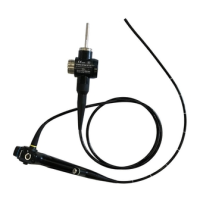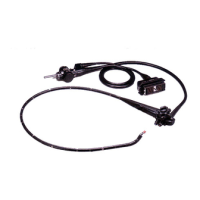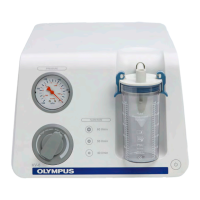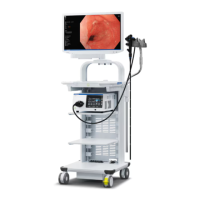Chapter 4 Operation
45
BF TYPE 160 Series OPERATION MANUAL
High frequency cauterization
• Never perform electrosurgery with the
BF-3C160/MP160F/XP160F, because the distal ends of
these instruments are not insulated. Patient injury can result.
• Do not perform electrosurgery while supplying oxygen. This
may result in combustion during cauterization.
• Always confirm that the electrode section of the
electrosurgical accessory is an appropriate distance away
from the distal end of the endoscope. Confirm that the green
marking at the distal tip of the electrosurgical accessory can
be observed on the endoscopic image (see Figure 4.4). If the
electrode is used when too close to the distal end of the
endoscope, the endoscope and/or ancillary equipment may
be damaged. Using a damaged endoscope may cause
patient injury.
Figure 4.4
• Set the electrosurgical unit to the minimum necessary output
level. If the output level is too high, the endoscope’s and/or
accessory’s insulation may be damaged and cause patient
and/or operator burns.
• Before performing electrosurgery, inspect the surface of the
endoscope for any dents, bulges or other irregularities.
• When performing electrosurgery, do not use the
electrosurgical unit’s SPRAY coagulation mode. The
endoscope may be damaged.
Prepare, inspect and connect the electrosurgical unit and electrosurgical
accessories as described in their instruction manuals.
Green marking
Endoscopic
image
Electrode
Flexible tube

